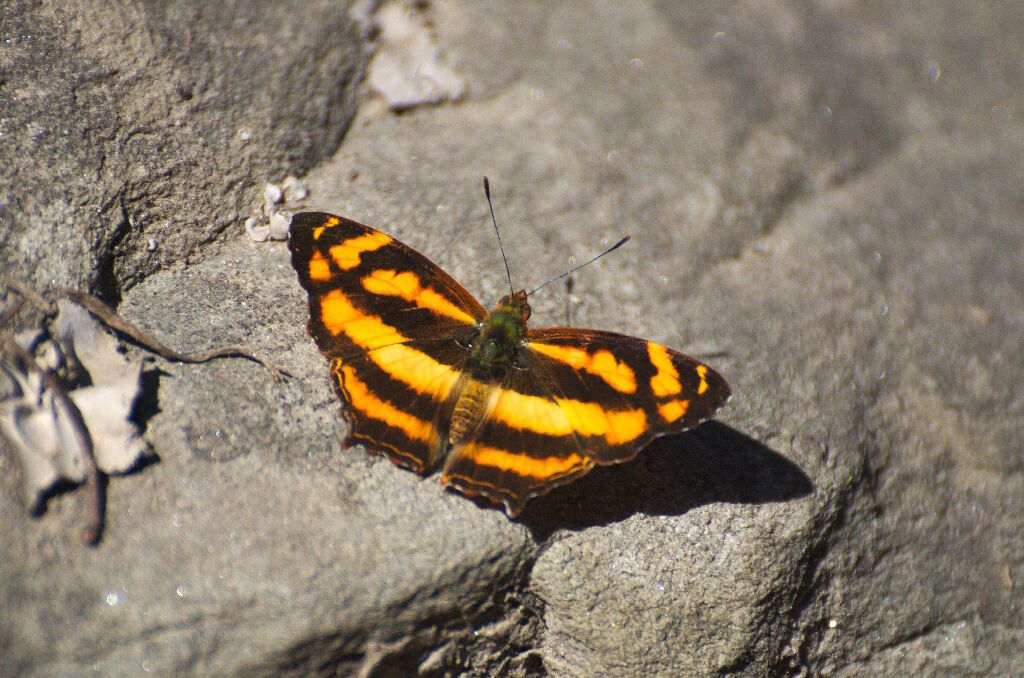
Symbrenthia hippoclus (Common Jester)
Symbrenthia hippoclus in the Great Himalayan National Park
This butterfly species, commonly known as the Common Jester, is one of the many vibrant butterflies found within the rich and diverse ecosystems of the Great Himalayan National Park (GHNP). This beautifully patterned butterfly adds a splash of orange and black to the lower altitudinal zones of GHNP, particularly during the warmer months when the park bursts into bloom. Observing Symbrenthia hippoclus in the wild is a delightful experience for nature lovers and butterfly enthusiasts visiting GHNP.
Symbrenthia hippoclus is typically found in subtropical and temperate forests, often fluttering near forest edges, trails, and sunny clearings. In GHNP, its presence is mostly observed in Sainj and Tirthan valleys, where its host plants are abundant. These butterflies prefer moist, leafy environments with plenty of nectar sources and are usually seen basking on sunlit leaves or mud-puddling near streams.
| Common Name | Common Jester |
| Botanical Name | Symbrenthia hippoclus |
| Family | Nymphalidae |
| Description | It is a common butterfly having wingspan 45-55mm and found in hilly forest between 300m and 1500m from march to December. The sexes are alike and upper forewings are dark brown with yellow or tawny bands. The under forewings are yellow with only dark reddish brown irregular markings, and straight brown line from near base of vein. The brown line is darker than the other markings. |
While not considered rare or endangered, the presence of Symbrenthia hippoclus in GHNP is a positive sign of the park’s healthy forest ecosystems. Butterflies like this one are important pollinators and bioindicators, meaning they reflect the overall health of the environment.
The Great Himalayan National Park, a UNESCO World Heritage Site, serves as a critical refuge for insect diversity, including butterflies like Symbrenthia hippoclus, whose survival is tied to the conservation of native flora and forest habitats.



